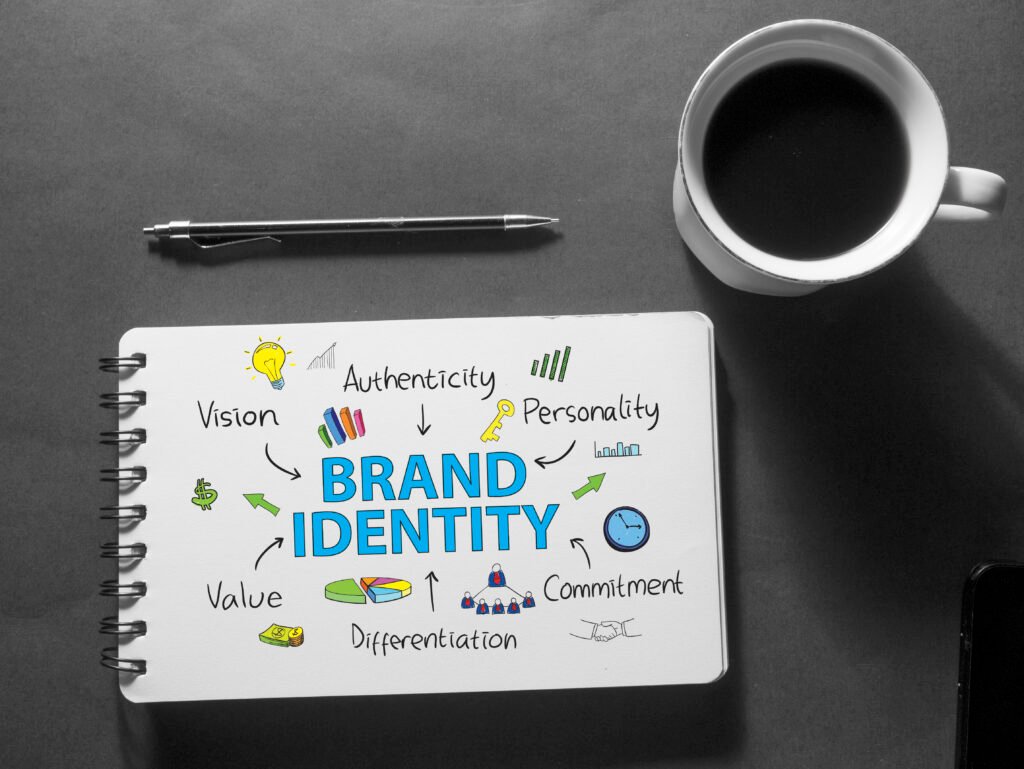Introduction

In today’s digital age, branding isn’t just for big businesses. It’s a powerful tool that anyone with an online presence can use to carve out their niche. For social media personalities, strong branding can be the difference between being just another account and becoming an influential voice in your space. But what does it take to create a brand that not only stands out but also stands the test of time?
Understanding Personal Branding
Before diving into the specifics, let’s define what personal branding actually means. Personal branding is the practice of marketing yourself and your career as a brand. It involves crafting a public persona that reflects your values, skills, and personality, allowing you to connect with your audience on a deeper level.
Key Elements of a Strong Personal Brand
- Authenticity: Your brand should be a true reflection of who you are. Authenticity resonates with audiences because it builds trust and credibility. If you’re faking it, people will see right through you eventually.
- Consistency: Whether it’s your visual style, the tone of your posts, or your messaging, consistency is key. It helps your audience recognize you instantly, no matter where they encounter your content.
- Storytelling: Every strong brand tells a story. Your personal brand should communicate a clear narrative about who you are, what you stand for, and why people should follow you.
Why Branding is Essential for Social Media Personalities
So why exactly is branding so crucial for social media personalities? It’s simple: branding helps you stand out in a crowded digital landscape.
Differentiating Yourself from the Competition
With millions of users vying for attention on social media, having a strong personal brand makes you memorable. It differentiates you from the countless others in your niche and makes you the go-to person for your audience’s needs.
Building Trust and Credibility
A well-crafted brand communicates professionalism and reliability. When people know what to expect from you, they are more likely to trust your opinions, products, and recommendations.
Establishing a Loyal Audience
Loyalty is built on trust and consistency. A strong brand fosters a sense of community, encouraging your followers to stick around, engage with your content, and share it with others.
Steps to Develop a Personal Brand for Social Media
Creating a personal brand isn’t something that happens overnight. It requires careful planning and strategic execution.
Identifying Your Unique Value Proposition
Start by figuring out what makes you unique. What skills, experiences, or perspectives do you bring to the table that others don’t? Your unique value proposition (UVP) is the foundation of your brand.
Defining Your Target Audience
Next, identify who you’re trying to reach. Your content should be tailored to appeal to this specific group of people. The better you understand your audience, the more effectively you can communicate with them.
Creating a Consistent Visual Identity
Your visual identity includes everything from your profile picture to the colors and fonts you use. Consistency in visual branding helps reinforce your identity across all platforms.
Crafting Your Personal Brand Story
People connect with stories, not just information. Develop a compelling narrative that explains who you are, what you do, and why you do it. This story should be woven into your content and communication.
Developing a Content Strategy
Content is the vehicle for your brand message. Plan out what types of content you’ll create, how often you’ll post, and how it will align with your brand goals.
Leveraging Social Media Platforms for Branding
Not all social media platforms are created equal. The ones you choose should align with your brand goals and audience.
Choosing the Right Platforms
Are you a visual storyteller? Instagram and Pinterest might be your go-to platforms. More into professional networking? LinkedIn is the place to be. Focus on platforms where your target audience is most active.
Tailoring Content for Each Platform
Each platform has its own strengths. Customize your content to suit the platform you’re using—Instagram is ideal for high-quality images and short videos, while Twitter is great for quick thoughts and updates.
Utilizing Hashtags and SEO Best Practices
Hashtags can significantly boost your content’s visibility. Use relevant and trending hashtags to reach a wider audience. Additionally, optimize your content with SEO best practices to ensure it ranks well in searches.
The Role of Content in Personal Branding

Content is king in the world of social media. It’s how you communicate your brand and engage with your audience.
Importance of Quality Content
Your content should always provide value, whether it’s entertaining, educational, or inspirational. High-quality content not only attracts followers but also keeps them coming back for more.
Types of Content to Consider
- Videos: Video content is highly engaging and versatile. You can create tutorials, behind-the-scenes clips, or live streams to connect with your audience in real time.
- Blogs: Blogging allows you to dive deep into topics, showcasing your expertise and offering value to your audience.
- Social Media Posts: Regular posts keep your brand top of mind. Use a mix of content types—photos, quotes, infographics—to keep things interesting.
Building and Engaging with Your Audience

Building a following is only half the battle. Keeping them engaged is where the real work begins.
Interaction Strategies to Increase Engagement
Engagement is a two-way street. Respond to comments, ask questions, and encourage discussion. The more you interact with your followers, the more connected they’ll feel to your brand.
Building Community and Fostering Loyalty
Create a sense of belonging among your followers. Whether it’s through a Facebook group, Twitter chat, or Instagram live sessions, fostering a community around your brand encourages loyalty.
The Power of User-Generated Content
Encourage your followers to create content related to your brand. User-generated content not only builds community but also acts as powerful social proof.
Maintaining Your Brand Over Time
A successful brand isn’t static—it evolves with you.
Adapting to Trends without Losing Your Identity
Trends come and go, but your core brand values should remain consistent. Adapt to new trends in a way that aligns with your brand identity.
Monitoring and Managing Your Online Reputation
Keep an eye on what people are saying about you online. Address negative feedback professionally, and make sure your online presence reflects the brand you want to portray.
Common Mistakes to Avoid in Personal Branding
Even with the best intentions, it’s easy to make mistakes in personal branding.
Being Inconsistent
Inconsistency can confuse your audience and weaken your brand. Stick to your visual style, messaging, and posting schedule.
Ignoring Analytics and Feedback
Use analytics to measure your content’s performance and understand your audience’s behavior. Don’t ignore constructive criticism—use it to improve.
Over-Promotion
While promoting your services or products is essential, overdoing it can turn followers off. Balance promotional content with value-driven posts.
Case Studies: Successful Social Media Branding
Looking at successful examples can provide inspiration and insight.
Example 1: A YouTube Personality
Consider a YouTube creator who built their brand on educational content. By consistently delivering high-quality videos and engaging with their audience, they’ve established themselves as a trusted expert in their niche.
Example 2: An Instagram Influencer
An Instagram influencer might focus on lifestyle content, using visually appealing posts and stories to connect with their audience. Their success lies in their ability to create a strong, relatable personal brand that resonates with followers.
Conclusion
Branding is the backbone of a successful social media personality. It’s what sets you apart, builds trust, and keeps your audience coming back for more. By focusing on authenticity, consistency, and engagement, you can create a personal brand that not only thrives on social media but also stands the test of time.
FAQs
- What’s the first step in creating a personal brand for social media?
- The first step is identifying your unique value proposition—what makes you different from others in your niche.
- How often should I post to maintain my brand?
- Consistency is key, so aim for a regular posting schedule that you can maintain without compromising quality.
- Can I rebrand my social media personality?
- Yes, rebranding is possible, but it should be done thoughtfully to ensure it aligns with your long-term goals and doesn’t confuse your audience.
- What are some tools to help with personal branding?
- Tools like Canva for design, Hootsuite for scheduling, and Google Analytics for tracking performance can be invaluable.
- How do I measure the success of my personal brand?
- Success can be measured by your engagement rates, follower growth, and the strength of your community, among other metrics.



